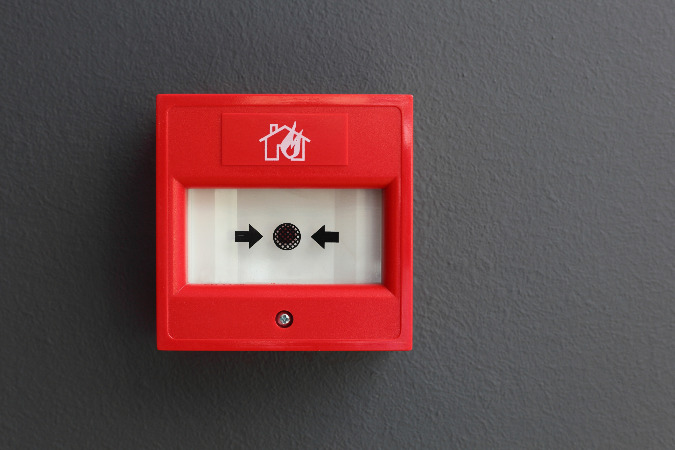What is a Fire Alarm System?

A fire alarm system has a number of devices working together to detect and warn people through visual and audio appliances when smoke, fire, carbon monoxide or other emergencies are present. These alarms may be activated automatically from smoke detectors, and heat detectors or may also be activated via manual fire alarm activation devices such as manual call points or pull stations. Alarms can be either motorized bells or wall mountable sounders or horns. They can also be speaker strobes which sound an alarm, followed by a voice evacuation message which warns people inside the building not to use the elevators. Fire alarm sounders can be set to certain frequencies and different tones including low, medium and high, depending on the country and manufacturer of the device. Most fire alarm systems in Europe sound like a siren with alternating frequencies. Fire alarm electronic devices are known as horns in the United States and Canada, and can be either continuous or set to different codes. Fire alarm warning devices can also be set to different volume levels.
Parts
- Fire alarm control panel (FACP) AKA fire alarm control unit (FACU); This component, the hub of the system, monitors inputs and system integrity, controls outputs and relays information.
- Primary power supply: Commonly the non-switched 120 or 240-volt alternating current source supplied from a commercial power utility. In non-residential applications, a branch circuit is dedicated to the fire alarm system and its constituents. “Dedicated branch circuits” should not be confused with “Individual branch circuits” which supply energy to a single appliance.
- Secondary (backup) power supplies: This component, commonly consisting of sealed lead-acid storage batteries or other emergency sources including generators, is used to supply energy in the event of a primary power failure. The batteries can be either inside the bottom of the panel or inside a separate battery box installed near the panel.
- Initiating devices: These components act as inputs to the fire alarm control unit and are either manually or automatically activated. Examples would be devices such as pull stations, heat detectors, and smoke detectors. Heat and smoke detectors have different categories of both kinds. Some categories are beam, photoelectric, ionization, aspiration, and duct.
- Fire alarm notification appliance: This component uses energy supplied from the fire alarm system or other stored energy source, to inform the proximate persons of the need to take action, usually to evacuate. This is done by means of a pulsing incandescent light, flashing strobe light, electromechanical horn, electronic horn, chime, bell, speaker, or a combination of these devices. Strobes are either made of a xenon tube (most common) or recently LEDs.
- Building safety interfaces: This interface allows the fire alarm system to control aspects of the built environment and to prepare the building for fire, and to control the spread of smoke fumes and fire by influencing air movement, lighting, process control, human transport and exit.
